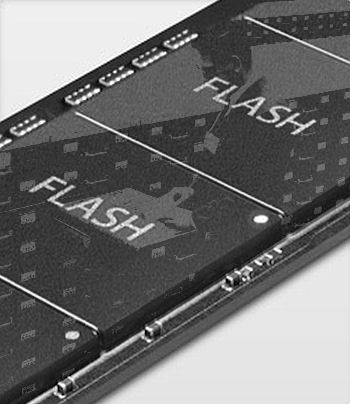Flash Storage Drives Major Opportunities For Resellers

Flash storage vendors are actively recruiting channel partners as markets boom and prices fall
Flash storage, which in all its forms is likely to be the biggest thing to hit the data centre in 2013, creates opportunities for resellers to help customers review how primary storage is managed.
Although it has been around for more than 20 years, flash memory costs have only dropped with the rise in consumers’ use of smartphones and tablets. Taking advantage of this growing demand, vendors have brought a raft of flash storage products to the market in the last two years.
Startup buy-up
For the most part, startup vendors led that charge but, within the last year, leading storage vendors, including Dell, Hewett-Packard, Hitachi Data Systems and IBM, introduced competitive offerings. EMC and NetApp are expected to follow shortly.
This is good news for the channel. In fact, many startup flash vendors are now actively recruiting channel partners as part of a concerted effort to compete more aggressively with larger storage vendors that have been slow to bring flash arrays to market.
Pure Storage, for example, recently expanded the amount of marketing development funds it makes available to partners. At the same time, the company set up an academy to help train its partners on how to sell flash storage systems.
“We want to help partners build a business around flash storage,” said Michelle Graff, director of worldwide channel marketing and the partner programme at Pure Storage. “By helping customers prepare for a flash future, partners can better differentiate themselves.”
Virident Systems, recently acquired by a unit of Western Digital, has launched its first channel programme. Dawn Marie Ruszel, the company’s senior director of worldwide channels, said the core of the programme revolves around deal registration and various levels of certification. “We want to make the deal registration process as simple as possible,” she said.
Virident is also trying to help channel partners bridge the divide that often exists between developers, who are demanding more application performance by adopting flash, and storage administrators, who are trying to incorporate flash into a larger data management strategy, Ruszel added. As part of that effort, the company has been concentrating on making flash storage available more as a shared resource than a point product that can be used only by a single application.
Others are strengthening their channel ties. Whiptail, a flash storage provider that was just acquired by Cisco, announced that it has signed a distribution agreement with Ingram Micro.
Cost factor
Elsewhere in the flash storage channel, Astute Networks is pursuing a strategy that emphasises flash storage products designed for midmarket customers that tend to rely heavily on channel partner expertise. “We’re trying to make flash storage affordable for the midmarket,” said Len Rosenthal, vice president of marketing for Astute Networks, “but that doesn’t mean [we have to] rip and replace everything they already have.”
When it comes to flash storage, much of the cost factor depends on the type being deployed. More expensive single-level-cell (SLC) technology is generally considered enterprise grade. And multilevel cell (MLC) technology, which is typically used in consumer-grade devices, has been adapted to develop flash storage array products.
Emerging vendors at the high end of the market include Kaminario and Violin Memory, while Astute Networks and Skyera have offerings based on MLC technology.
At this juncture, no one can be sure what percentage of the market will consist of all-flash storage systems. For that reason, major storage vendors have hedged their bets with hybrid storage systems that encompass both flash and magnetic storage systems. These systems are lower in cost than all-flash storage arrays. In addition, the cost of magnetic storage systems is also expected to fall, which might cause some customers to slow their migration.
From a channel perspective, that reticence is likely to result in additional consulting opportunities to deliver data management services in the form of either strategic advice or full-blown managed services. After all, where there is ambiguity, there are profit opportunities for the channel.
Flash storage is taking off—if for no other reason than that it provides multiple orders of magnitude in application performance improvements, while also reducing the amount of physical space and energy consumed in the data center.
The end result is an opportunity to sell new classes of storage systems that come along in the IT industry only once in a decade.
This is a US article. Details of channel offers and programmes may differ in the UK.